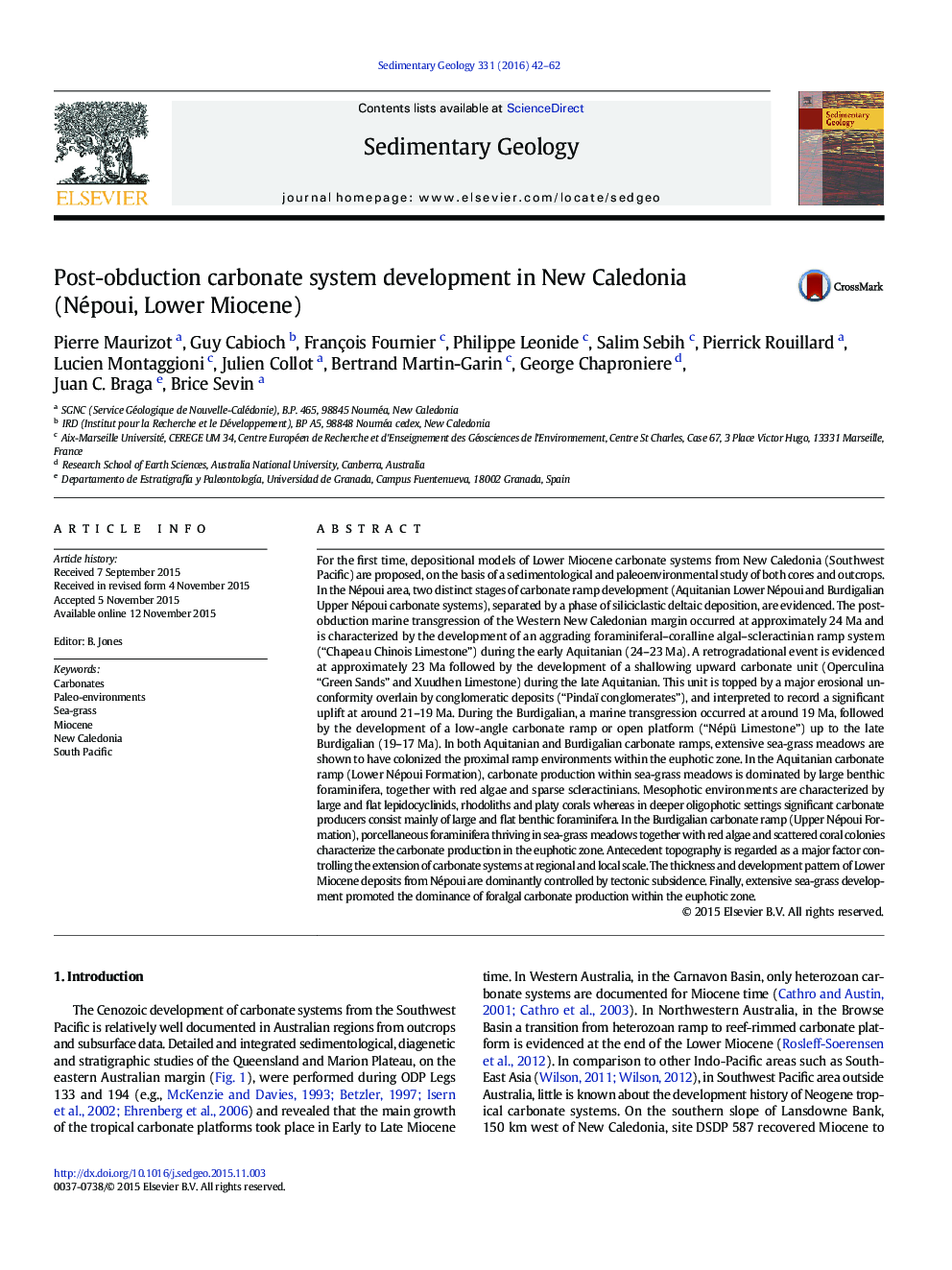| کد مقاله | کد نشریه | سال انتشار | مقاله انگلیسی | نسخه تمام متن |
|---|---|---|---|---|
| 4689135 | 1636032 | 2016 | 21 صفحه PDF | دانلود رایگان |

For the first time, depositional models of Lower Miocene carbonate systems from New Caledonia (Southwest Pacific) are proposed, on the basis of a sedimentological and paleoenvironmental study of both cores and outcrops. In the Népoui area, two distinct stages of carbonate ramp development (Aquitanian Lower Népoui and Burdigalian Upper Népoui carbonate systems), separated by a phase of siliciclastic deltaic deposition, are evidenced. The post-obduction marine transgression of the Western New Caledonian margin occurred at approximately 24 Ma and is characterized by the development of an aggrading foraminiferal–coralline algal–scleractinian ramp system (“Chapeau Chinois Limestone”) during the early Aquitanian (24–23 Ma). A retrogradational event is evidenced at approximately 23 Ma followed by the development of a shallowing upward carbonate unit (Operculina “Green Sands” and Xuudhen Limestone) during the late Aquitanian. This unit is topped by a major erosional unconformity overlain by conglomeratic deposits (“Pindaï conglomerates”), and interpreted to record a significant uplift at around 21–19 Ma. During the Burdigalian, a marine transgression occurred at around 19 Ma, followed by the development of a low-angle carbonate ramp or open platform (“Népü Limestone”) up to the late Burdigalian (19–17 Ma). In both Aquitanian and Burdigalian carbonate ramps, extensive sea-grass meadows are shown to have colonized the proximal ramp environments within the euphotic zone. In the Aquitanian carbonate ramp (Lower Népoui Formation), carbonate production within sea-grass meadows is dominated by large benthic foraminifera, together with red algae and sparse scleractinians. Mesophotic environments are characterized by large and flat lepidocyclinids, rhodoliths and platy corals whereas in deeper oligophotic settings significant carbonate producers consist mainly of large and flat benthic foraminifera. In the Burdigalian carbonate ramp (Upper Népoui Formation), porcellaneous foraminifera thriving in sea-grass meadows together with red algae and scattered coral colonies characterize the carbonate production in the euphotic zone. Antecedent topography is regarded as a major factor controlling the extension of carbonate systems at regional and local scale. The thickness and development pattern of Lower Miocene deposits from Népoui are dominantly controlled by tectonic subsidence. Finally, extensive sea-grass development promoted the dominance of foralgal carbonate production within the euphotic zone.
Journal: Sedimentary Geology - Volume 331, January 2016, Pages 42–62